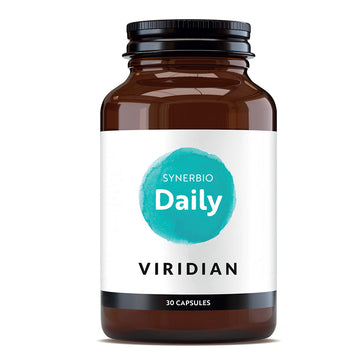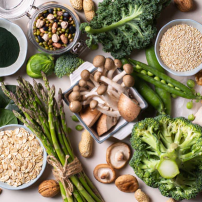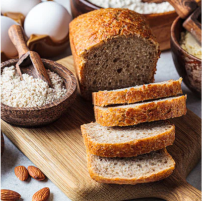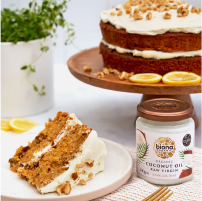Prebiotics and probiotics may sound similar but they both play different roles in promoting the growth of friendly bacteria in our gut.
Probiotics are friendly bacteria, whilst prebiotics is the valuable fuel that feeds the good bacteria already in our microbiome (aka our gut micro-eco-system). Having an intake of both can naturally help our gut flora to flourish.
An Introduction To Probiotics
The International Probiotics Association states that probiotics, also referred to as friendly bacteria, are live micro-organisms that when consumed in adequate amounts, provide a health benefit to the host.
Remarkably, the human gut is home to an immense population of bacteria that contribute to overall health, including digestive health, nutrition and immunity and more. It is critical to health that balance is maintained between the various species - when the balance is disturbed, the risk of disease increases. The two common ways of increasing good bacteria in the gut and thereby restoring the body’s microbiome’s natural balance is consuming probiotic foods or food supplements. Several clinical studies have demonstrated the ability of probiotics to improve gut bacterial health with daily supplementation. One study indicated that daily supplemental probiotics in infants is well tolerated and contributed to the development of bifidobacterium-predominant gut microbiota during the critical developmental phases of infancy (1). The bifidobacterium strains in the infant gut plays an important role in educating the immune system and therefore shaping childhood health.

How to increase friendly bacteria
There are many probiotic foods that help increase friendly bacteria in the microbiome. Dietary probiotic sources are required daily to provide sufficient levels of friendly bacteria to the gastrointestinal tract. Bacteria are used to ferment milk into yoghurt and fermented foods. Therefore, foods such as yoghurt, sauerkraut, kimchi and kombucha are valuable sources of good bacteria.
Aside from dietary sources, taking beneficial bacteria supplements can help provide a consistent daily intake of specific bacterial strains. These usually consist of a combination or single strain of the following broad species of bacteria:
- Lactobacillus strain is populated in the intestines and restricts the growth of pathogenic (or infectious) microorganisms in our gut.
- Bifidobacterium strains populate the colon to enhance immunity, reduce gastrointestinal infections and improve health conditions.
- Saccharomyces boulardii is a 'friendly' organism that helps fight off 'bad' organisms to reduce the risk of disease development.
What Are Prebiotics?
Prebiotics are resistant fibers that are a non-digestible food component yet beneficially affect the friendly bacteria already in the gut. Prebiotics achieve this by providing ‘fuel’ and stimulating growth and activity of the microbiota.
There are a myriad of benefits associated with prebiotics and these include:
- Increasing the production of short-chain fatty acids
- Warding off pathogens (or germs) in the intestinal tract
- Improving liver function
- Reducing serum cholesterol and blood pressure
- Managing chronic kidney disease through the reduction of serum urea nitrogen
- Increasing the bioavailability of calcium
- Improving the elimination process of toxic compounds (2).
How to increase prebiotic intake
Like probiotics, prebiotics can be taken in many forms – via the diet and through supplements. Resistant fibers are found broadly in fibrous vegetables, onions and garlic are good natural sources of inulin and fructooligosaccharides (FOS), known to support gut bacteria. Other fruits and vegetables that are good prebiotic sources are asparagus and bananas, which contain a small amount of natural inulin, and mushrooms contain naturally occurring prebiotics, including chitin, mannans, and xylans. Other naturally occurring prebiotics are chicory root fibre, a source of prebiotics and antioxidants; flaxseeds packed with prebiotic dietary fibers; and whole grain oats rich in beta-glucans, a prebiotic fiber compound.
Taking a prebiotic supplement can be a more direct approach to helping your microbiome harness the benefits. A full-spectrum prebiotic supplement consists of a combination of short-chain (e.g. oligosaccharide) and longer-chain prebiotics (e.g. inulin). A full-spectrum blend acts in different sites in the large intestine and nourishes bacteria throughout the colon.
Do I need to take both prebiotics and probiotics?
The combination of a prebiotic and a probiotic can present many benefits and is referred to as a ‘synbiotic’. Adding an intake of both to your daily routine can help your gut create a natural balance of both good and bad bacteria in the gut. If you are buying a synbiotic, prebiotics should be derived from a source of fibre –inulin or fructooligosaccharides (FOS).
How do I choose a supplement containing both?
Taking a food supplement containing both prebiotics and probiotics can be a convenient way of providing a high volume of bacteria strains over a food source. Therefore, taking probiotic supplements containing multiple strains of bacteria can be beneficial to gut health. When choosing a quality friendly bacteria supplement, always check the label and make sure it contains well-researched strains such as those listed above.
How do I know what is an effective dosage for a probiotic supplement?
An effective probiotic dosage should range between 1 billion to 20 billion CFU/mg daily, dependent on your health goals. CFU represents ‘Colony Forming Units’ and is the measurement used to distinguish how much bacteria can divide and form colonies.
Looking for more ways to support your digestive health? Read our blog 'Bacteria And Our Digestive System'.














